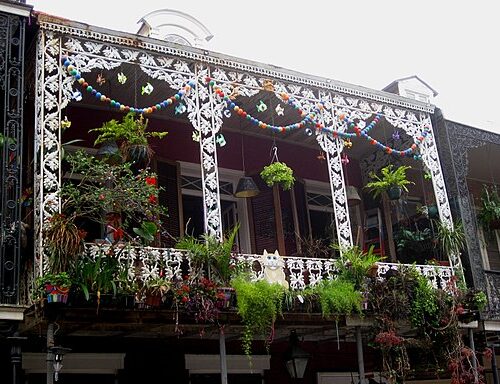Originally published in the French Quarter Journal, February 7, 2020.
A mysterious dancer in the early 1800s mesmerized crowds and caused consternation by cross-dressing and challenging social norms.
She led a life both romantic and tragic, the stuff of which epics are written. Yet, little is known about her birth and upbringing. In the ballet halls of 18th-century Paris, she was declared a child prodigy. Later, she became America’s first female choreographer, and among the first to perform a full ballet in this country.
Men fought over her. She was an acclaimed beauty. But she contracted a disfiguring disease, and eventually died in New Orleans, alone and in poverty.
Born in France

Suzanne was from Dole, France. Her birth name was Suzanne Théodore Vaillandé, and she was said to be an illegitimate child, un enfant naturel, born in 1778 to Marie Reine Vaillandé, a woman of modest means.
But by 1786, at the age of eight, Suzanne was in Paris. There she learned to dance, probably at the Royal Academy of Music. She showed so much talent that she was soon engaged to perform at the Paris Opera Ballet and at Nicolet’s Théâtre des Grand Danseurs du Roi. Though just a child, Suzanne was famous for her grace and admired for her beauty.
At Nicolet’s, Suzanne caught the eye of a man named Alexandre Placide, who soon began to produce her performances. Placide was born in 1750, making him about four times the girl’s age. His stage talent was extraordinary: actor, singer, musician, acrobat, poet, pantomimist, tightrope walker, swordsman, director, and producer. And he was a powerful force within the politics of French theater.
Skipped Town
But Placide had legal troubles. His wife filed a police complaint against him for pawning her jewelry, and for forcing himself upon their 13-year-old servant girl.
To escape punishment, Placide skipped town with 10-year-old Suzanne around 1788, just before the French Revolution. Soon, he and Suzanne found themselves in the French colony of Saint-Domingue, today called Haiti.
There, Placide pulled together a stage company called the Troupe des Danseurs du Roi. Suzanne was the starring female performer, and he billed her as Mme. Placide.
They toured Saint-Domingue for a few years, sometimes performing acrobatic displays, comic ballets, and harlequinades. But Placide smelled political trouble, and removed the troupe to the United States, just weeks before the 1791 Haitian rebellion of enslaved people.
Suzanne debuted on a U.S. stage in Annapolis on October 29, 1791. It was the first full ballet ever performed in the U.S., and Suzanne was said to be the first trained ballerina to perform in this country. Her January 25, 1792 performance in The Bird Catcher at the John Street Theater was the first ballet performed in New York.
Suzanne still appeared as Mme. Placide, despite her age and the fact that she and Placide were not married. Disturbing rumors of Placide’s intentions with this child were confirmed when, at the age of 15, Suzanne gave birth to a daughter.
Charleston Their Base

The company eventually made Charleston their base. There, at the Charleston French Theatre in 1796, Suzanne choreographed Echo et Narcisse, a pastoral ballet about the unrequited love of the nymph Echo for self-indulgent Narcissus. With this, Suzanne became the first woman choreographer in the U.S.
One of the performers at the Charleston theatre was Louis Boucher Douvillier. Louis was 35 years old and handsome, a popular opera singer and ballet dancer. By 1796, he had fallen in love with Suzanne. She was then 18, and had not only the daughter, but a son as well.
Sensing Louis’ feelings for Suzanne, Placide challenged the younger man to a duel in the streets of Charleston. Scandal-fueled stories of the battle soon spread, with contradictory accounts of who wounded whom. Days after the duel, Suzanne and Louis fled Charleston together with Suzanne’s daughter. They left the son with Placide. But without a hint of shame, Placide married someone else, just a few days later: a 16-year-old girl.
After leaving Charleston, Louis and Suzanne produced a show and went on tour, including a year-long residency in Philadelphia. By 1799, they had married, and established a permanent home in New Orleans. She began to appear onstage as Mme. Douvillier.
Arrival in New Orleans
This was a tumultuous period in New Orleans. The Crescent City was under Spanish occupation, and the administration was detested by the French residents. And in recent years, immigration to New Orleans had mushroomed. Refugees from the Saint-Domingue revolt flooded in, overwhelming resources.
But Suzanne’s marriage turned sour. Around 1802, Louis left her for another woman, a soprano with whom he had previously appeared onstage.
Suzanne and Louis never divorced, and she continued to appear onstage as Mme. Douvillier. But she needed neither Louis nor Placide, for she led her own career in New Orleans.
In 1808 Suzanne opened Le Théâtre de la Gaîté on St. Philip Street, between Royal and Bourbon. But the theatre was an economic failure. It closed after six months. The St. Philip Street Theatre moved into that location and hired Suzanne as the principal dancer and ballet mistress. She was still, it seems, the only female choreographer in the U.S.
Jill of All Trades
Suzanne held many jobs at the St. Philip Street Theatre, including directing, stage performance, hospitality, management, and probably advertising. During the 1812-13 theater season, Suzanne became the first woman to design and paint stage sets in the U.S.
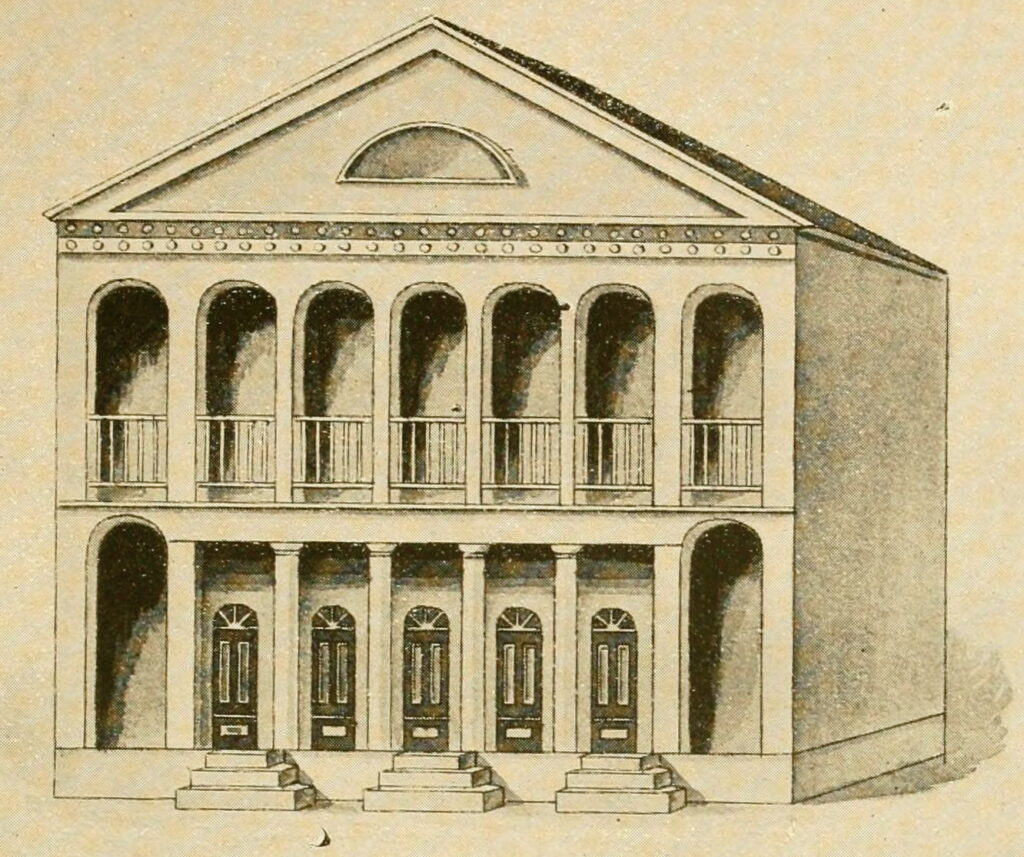
She was the jack-of-all-trades needed to keep the theatre alive and profitable. Really, not much has changed from Shakespeare’s day, through Suzanne’s time, until now.
In 1808, she was the first woman in America to appear onstage in male costume – en travesti, they say in operatic circles. Where else would this have happened than in New Orleans? It turns out that the use of castrated male singers, castrati, went out of style in the early 19th century, and women began to take the mezzo soprano male roles. There is no evidence that Suzanne was a singer, but the changing practice may have opened the doors to similar roles for women in ballet.
Though they had been separated for years, tensions remained high between Suzanne and Louis.
Protest
A public battle erupted between them in November 1812, when Suzanne engaged a Mons. Dupré to sing onstage at the St. Philip with other performers. The decision was forward-thinking for the times, because Mons. Dupré was a man of color in a segregated business.
Louis loudly protested. He and twelve other performers refused to go onstage with Dupré because of the man’s race. They even sent a letter to Mayor Nicolas Girod, asking him to intercede and ban the performance, though it’s not clear whether Girod acted on the request. The protest may have been an effort to wrest control of the theater from Suzanne.
Bethany Ewald Bultman, Co-Founding Director and Chair of the New Orleans Musicians Clinic & Assistance Foundation, has been researching Suzanne’s life:
I am not sure if this is fact, but there is a belief that male theater owners in early 19th century post-colonial Louisiana complained about her “skirting” the rules. Then once she succeeded in creating an audience for ballet, they did all they could to run her out of business. This 1812 letter seems to be an example of their trying to destroy her business. And her ex- was right on board with that.
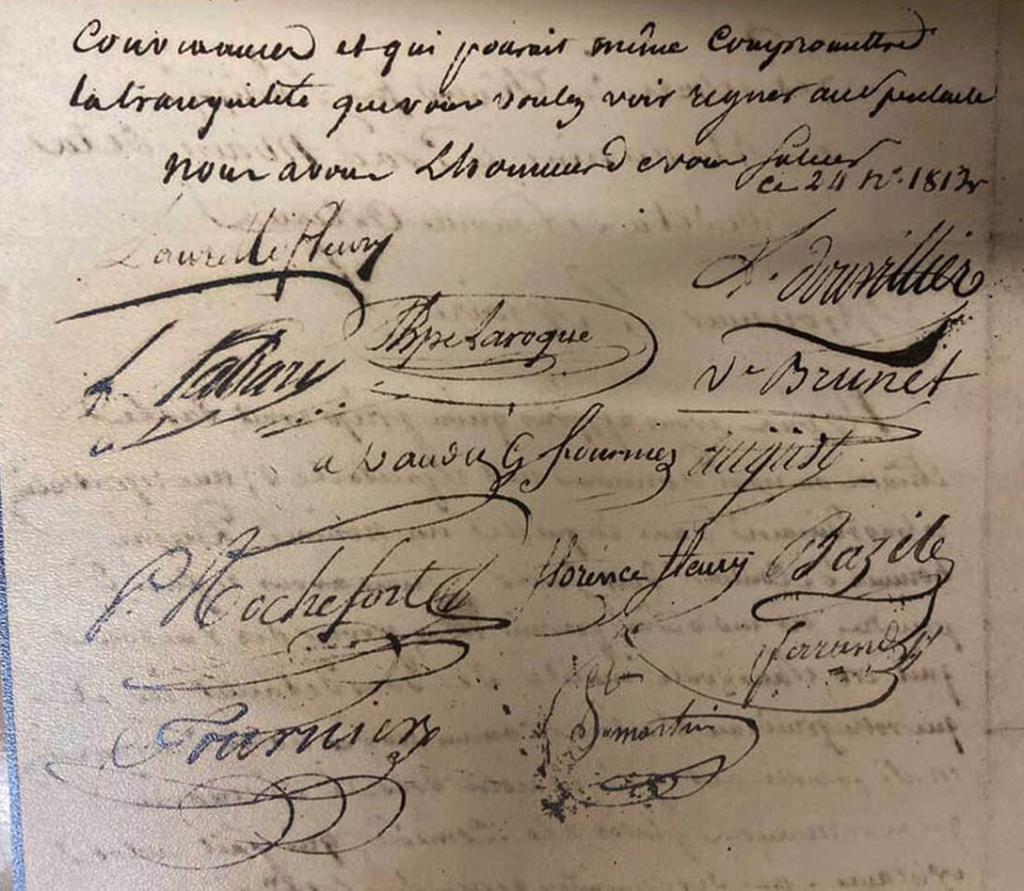
In the mid-1810s, Suzanne fell on hard times. She was never rich, and as she aged, she no longer made the income younger performers might receive. She fell into poverty.
Worse, Suzanne was stricken with a terrible medical condition. American actor and memoirist Noah Ludlow provided a firsthand account.
Ludlow and his company had performed in New Orleans for the 1817-18 theater season, and in April 1818, he hired Louis and Suzanne, sight unseen, to perform the ballet Don Juan.
Louis played the title character, and Suzanne took the role of Donna Anna. But she did not come to the rehearsals. When she finally appeared at the theater, on the night of the first performance, she wore a black silken mask that covered her face from chin to just below the eyes.
Though Suzanne wore the mask throughout the performance, she received immense applause.
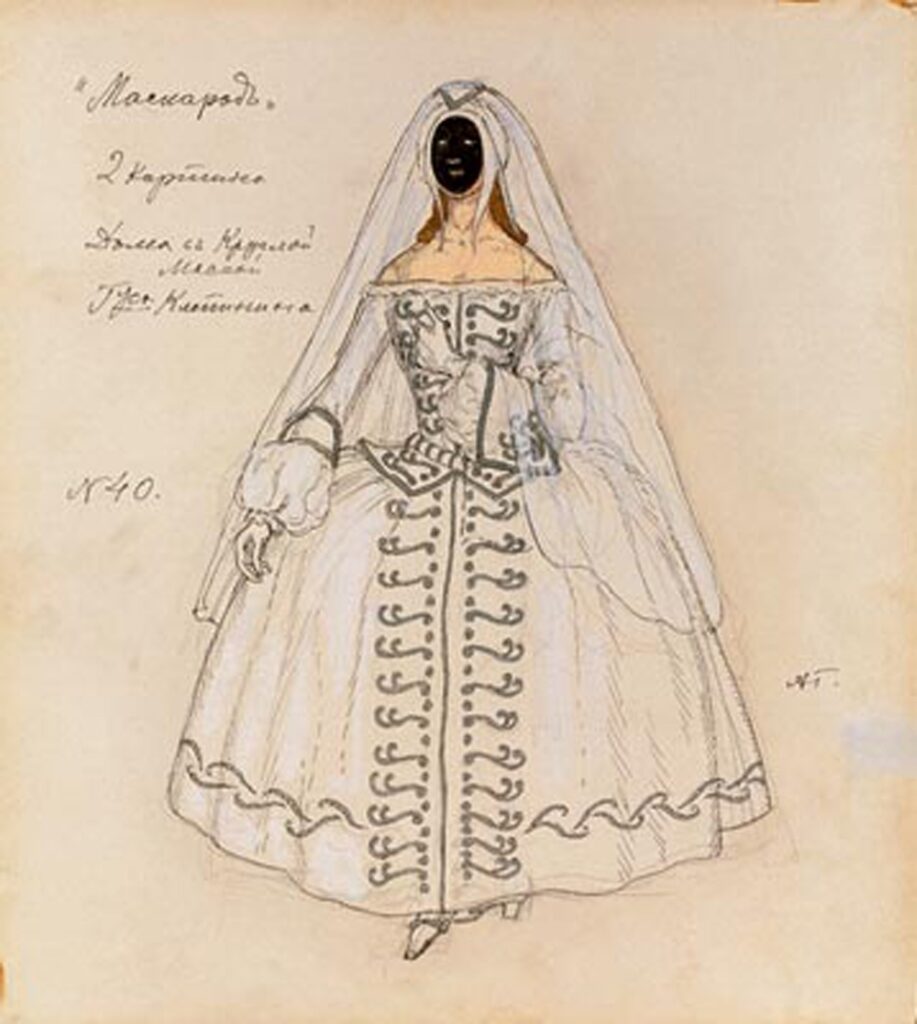
Neither Louis nor Suzanne explained to Ludlow the purpose of her mask – in fact, Suzanne never spoke at all. But Ludlow later learned that Suzanne had contracted a disease to which she had lost her nose and part of her mouth. Some speculated cancer. Early 19th-century cancer treatments were mostly limited to surgical removal, such as rhinectomies.
For the remainder of her life, she never appeared in public without the mask.
The 1818 performance was apparently Suzanne’s last time on stage. She was soon unable to perform, and it was rumored she sometimes pulled a firewood cart through the Vieux Carré to make a little money.
Accomplishments to Be Recognized
Louis died suddenly in 1821. Suzanne died five years later at the still-young age of 48, alone and in poverty. She and Louis are buried in paupers’ graves in St. Louis Cemetery No. 1. Bultman is seeking to locate Suzanne’s wall tomb, and perhaps to install a plaque to her memory.
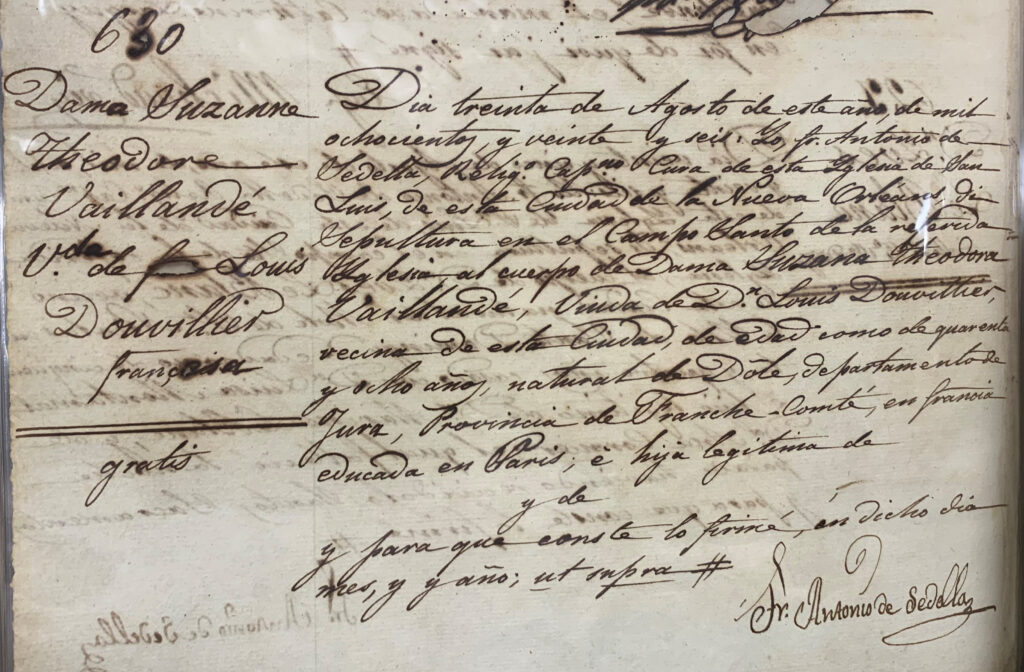
Suzanne Vaillandé Douvillier’s accomplishments in American ballet must be recognized: she was the first trained ballerina to perform in the U.S., the first female choreographer in the U.S., the first woman to appear on an American stage en travesti, the first female set designer in the U.S, and perhaps the first woman to open and manage a theater in New Orleans.
Acknowledgements
The author would like to thank Bethany Ewald Bultman, Co-Founding Director and Chair of the New Orleans Musicians Clinic & Assistance Foundation, and Lori Shexnayder, Research Services Library Associate, Tulane University Library Special Collections, for their help on this story.
References
Bozak, Nina, “A Woman of Firsts: Suzanne Douvillier Changed Dance in New Orleans—and in America,” The Historic New Orleans Collection, August 28, 2018, https://www.hnoc.org/publications/first-draft/woman-firsts-suzanne-douvillier-changed-dance-new-orleans%E2%80%94and-america.
“721 St. Philip St.,” Vieux Carré Digital Survey, https://www.hnoc.org/vcs/property_info.php?lot=22928-01.
Costonis, Maureen Needham. Ballet Comes to America, 1792-1842: French Contributions to the Establishment of Theatrical Dance in New Orleans and Philadelphia. 1989. New York University, PhD dissertation.
Andros, Dick. “The Beginnings of American Ballet,” Andros on Ballet, September 1993, http://michaelminn.net/andros/history/beginnings_of_american_ballet/index.html.
Plyer, Alison and Lamar Gardere. “The New Orleans Prosperity Index: Tricentennial Edition,” The Data Center, April 11, 2018, https://www.datacenterresearch.org/reports_analysis/prosperity-index/.
Bardet, Jean-Pierre. “Early Marriage in Pre-Modern France,” Hist. Fam., 6(3) 2001, 345-63.
Needham, Maureen. “Suzanne Douvillier,” American National Biography, February 2000, https://doi.org/10.1093/anb/9780198606697.article.1800317.
“Suzanne Théodore Vaillande Douvillier,” Encyclopedia Birtannica, https://www.britannica.com/biography/Suzanne-Theodore-Vaillande-Douvillier
Ludlow, N.M. Dramatic Life As I Found It. St. Louis: G.I. Jones and Company, 1880, pp. 145-149.
Braun, Juliane. Creole Drama: Theatre and Society in Antebellum New Orleans. Charlottesville: The University Press of Virginia. 2019.
Louis Douvillai death record, July 26, 1821, Tulane University Library Special Collections, New Orleans, Louisiana.
Suzanne Théodore Vaillandé death record, August 30, 1826, Tulane University Library Special Collections, New Orleans, Louisiana.
James, Edward T. et al. “Suzanne Douvillier.” Notable American Women, 1607-1950: A Biographical Dictionary. Boston: Belknap Press. 1971.
Kaufman, Sarah. “New Orleans & Dance, Partners Again.” The Washington Post. June 15, 2003, p. N1.

